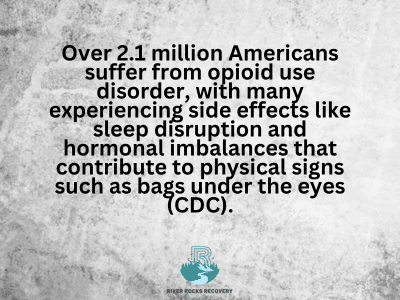The visible impact of drug use often serves as a stark reminder of its toll on the body and mind. One of the most telling signs of substance abuse is the development of bags under the eyes. These dark, swollen areas result from a combination of physical, emotional, and lifestyle factors that drug use exacerbates. Chronic use of substances like methamphetamine, opiates, and other stimulants disrupts sleep patterns, depletes hydration, and strains the body’s systems, leading to these noticeable changes in appearance.
Physical appearance often reflects our internal health, and changes can signal underlying issues that need attention. One such change is the development of bags under the eyes—a common cosmetic concern that can indicate more serious health problems. Drug use, in particular, can contribute significantly to this condition. Understanding how substance abuse affects your body and appearance is crucial for recognizing the need for help. Understanding the connection between drug use and these physical symptoms is the first step toward addressing the root cause and finding a path to recovery.
The Science Behind Eye Bags and Drug Use
The development of bags under the eyes due to drug use is not simply a matter of sleepless nights. Prolonged substance abuse alters the body’s natural balance, impacting the skin, circulation, and overall health. Stimulants such as methamphetamine often lead to insomnia, depriving the body of the restorative sleep it needs. Without adequate sleep, fluid retention occurs around the eyes, creating puffiness and dark circles.
Meanwhile, the toxins introduced by substances like opiates disrupt blood circulation, making the skin around the eyes appear dull and discolored. Additionally, the stress and anxiety accompanying addiction can lead to excessive rubbing of the eyes or neglect of self-care routines, further worsening the appearance of eye bags. These physical signs are a mirror to the internal chaos caused by addiction, highlighting the urgent need for intervention.
Causes of Bags Under the Eyes
- Fluid Retention: Accumulation of fluid in the lower eyelids due to various factors like sleep position or hormonal changes.
- Aging: Thinning skin and loss of elasticity can make fat deposits under the eyes more prominent.
- Genetics: A family history of this condition increases the likelihood of developing it.
- Lifestyle Factors: Lack of sleep, poor diet, allergies, and dehydration can all contribute.
How Drug Use Leads to Bags Under the Eyes
Substance abuse can exacerbate or directly cause the development of bags under the eyes through several mechanisms.
1. Dehydration
Many drugs, including alcohol, methamphetamine, and opioids, can lead to dehydration.
- Alcohol: Acts as a diuretic, increasing urine production and leading to fluid loss.
- Stimulants (e.g., methamphetamine): Increase metabolic rate and perspiration, causing fluid depletion.
Impact on Eyes: Dehydration reduces skin elasticity and makes the skin under the eyes appear sunken or puffy due to fluid imbalance.
2. Sleep Disruption
Drug use often interferes with normal sleep patterns.
- Stimulants: Substances like cocaine and methamphetamine can cause insomnia or reduced sleep quality.
- Depressants: While they may induce sleep, drugs like alcohol disrupt the REM cycle, leading to non-restorative sleep.
Impact on Eyes: Lack of restful sleep leads to dark circles and puffiness under the eyes due to poor blood circulation and fluid retention.
3. Nutritional Deficiencies
Substance abuse can result in poor dietary habits and nutrient absorption issues.
- Appetite Suppression: Drugs like methamphetamine reduce appetite, leading to inadequate nutrient intake.
- Malabsorption: Alcohol and opioids can interfere with the body’s ability to absorb essential vitamins and minerals.
Impact on Eyes: Nutrient deficiencies weaken skin health, causing it to become thin and pale, making bags under the eyes more noticeable.
4. Allergic Reactions and Sinus Issues
Some drugs can cause histamine release, leading to allergies or sinus congestion.
- Cocaine: Snorting cocaine irritates nasal passages, causing inflammation and congestion.
Impact on Eyes: Sinus congestion can lead to fluid accumulation under the eyes, resulting in puffiness.
5. Aging Acceleration
Drug use accelerates the aging process due to oxidative stress and reduced collagen production.
- Free Radical Damage: Substances like methamphetamine increase oxidative stress.
Impact on Eyes: Accelerated aging leads to loss of skin elasticity and firmness, making bags under the eyes more prominent.
Holistic Recovery: Healing Beyond the Surface
While addressing the physical symptoms is essential, true healing begins with tackling the root causes of addiction. At River Rocks Recovery, we believe recovery is more than overcoming substance use—it’s about restoring the mind, body, and spirit. Our Addiction Treatment Center in Ohio offers a sanctuary where individuals can embark on their transformative journey toward well-being.
Our programs, such as the Partial Hospitalization Program (PHP) and the Intensive Outpatient Program (IOP), provide structured environments tailored to each individual’s needs. Combining evidence-based therapies with holistic approaches, we help clients rediscover their inner strength, mend their relationships, and rejuvenate their physical health. Our dedicated team fosters a compassionate, stigma-free space where personal growth and resilience flourish, making recovery sustainable and meaningful.
Programs Tailored for Comprehensive Care
Recovery is not a one-size-fits-all process, which is why River Rocks Recovery offers diverse programs to address the unique challenges faced by individuals. Our Drug Rehab Treatment and Opiate Rehab Treatment provide targeted therapies that focus on the specific effects of these substances, including managing physical symptoms like eye bags and addressing the underlying mental health issues.
For those battling methamphetamine addiction, our specialized Methamphetamine Rehab Treatment focuses on restoring healthy sleep patterns, improving nutrition, and reversing physical signs of substance abuse. The Outpatient Program and Sober Living Program provide a continuum of care that supports clients as they reintegrate into daily life, ensuring they maintain their recovery journey. By blending clinical expertise with genuine empathy, we empower individuals to reclaim their lives and rebuild their identities.
Specific Drugs and Their Effects
1. Alcohol
- Dehydration: Leads to dry, sagging skin.
- Liver Damage: Impaired liver function affects toxin removal, impacting skin health.
2. Methamphetamine
- Sleep Deprivation: Extended periods of wakefulness exacerbate under-eye bags.
- Nutritional Neglect: Poor diet weakens skin structure.
3. Opioids
- Hormonal Imbalance: Affects cortisol levels, leading to fluid retention.
- Sleep Apnea Risk: Opioid use increases the risk of sleep disorders.
The Psychological Impact
The appearance of bags under the eyes can have a psychological toll, affecting self-esteem and mental health.
- Anxiety and Depression: Changes in appearance can lead to or worsen mental health issues.
- Social Withdrawal: Embarrassment may cause individuals to avoid social interactions.
Rediscovering Wellness Along the River’s Path
The journey to recovery is not merely about abstaining from substances; it’s about rediscovering what makes life meaningful and fulfilling. At River Rocks Recovery, we guide individuals along the river’s therapeutic path, helping them reconnect with their unique strengths and develop an enduring foundation for comprehensive well-being. Our focus on personal growth and community connection breaks down the stigma surrounding addiction, creating an environment where healing becomes a shared experience.
As individuals progress through our programs, the physical and emotional transformations become apparent. The dark circles and puffiness under the eyes begin to fade as clients prioritize self-care, nutrition, and healthy habits. These visible changes reflect the profound inner healing that occurs when addiction’s grip is released.

Recognizing the Need for Help
If you or a loved one notice the development of bags under the eyes along with other signs of substance abuse, it’s crucial to seek professional assistance.
Other Signs of Drug Use
- Physical Symptoms: Weight loss, skin sores, bloodshot eyes.
- Behavioral Changes: Isolation, neglecting responsibilities, erratic behavior.
- Mental Health Symptoms: Mood swings, anxiety, depression.
How River Rocks Recovery Can Help
We offer a range of programs tailored to meet individual needs:
Addiction Treatment Program
A comprehensive approach addressing physical dependence and underlying psychological factors.
Partial Hospitalization Program (PHP)
Provides intensive care with medical supervision, ideal for those requiring a structured environment.
Intensive Outpatient Program (IOP)
Offers flexibility for individuals to receive treatment while maintaining daily responsibilities.
Sober Living Program
A supportive community environment promoting accountability and long-term recovery.
Specialized Treatments
- Drug Rehab Treatment: Focused programs for specific substances like methamphetamine and opioids.
- Alcohol Addiction Treatment: Specialized care for alcohol dependence.
- Mental Health Therapy: Integrated treatment for co-occurring mental health disorders.
The Benefits of Seeking Treatment
- Improved Physical Health: Detoxification and healthy habits restore skin health.
- Enhanced Appearance: Reduction in bags under the eyes and other physical signs of drug use.
- Mental Well-being: Therapy addresses underlying issues contributing to substance abuse.
- Rebuilt Relationships: Support in repairing connections with loved ones.
Take the First Step Toward Healing
Bags under the eyes may seem like a minor cosmetic issue, but they can be a visible sign of deeper health problems related to drug use. Recognizing the connection between substance abuse and physical appearance is a crucial step toward seeking help.
At River Rocks Recovery, we are dedicated to supporting individuals on their journey to recovery. Our Addiction Treatment Center in Ohio provides personalized care to address both the physical and psychological aspects of addiction.
Take the first step toward a healthier life today. Call us at (888) 905-6281 to learn more about our programs and how we can help you or your loved one achieve lasting recovery.
FAQ How Drug Use Can Lead to Bags Under the Eyes
How does drug use cause bags under the eyes?
Drug use can lead to dehydration, sleep deprivation, poor nutrition, and accelerated aging, all of which contribute to the development of bags under the eyes.
Which drugs are most likely to cause bags under the eyes?
Substances like alcohol, methamphetamine, opioids, and cocaine are commonly associated with physical changes, including under-eye puffiness and discoloration.
Are bags under the eyes a permanent effect of drug use?
In many cases, addressing the underlying substance use and adopting healthier habits can improve the appearance of bags under the eyes. However, long-term damage may require additional medical or cosmetic treatments.
Can mental health issues from drug use worsen the appearance of bags under the eyes?
Yes, stress, anxiety, and depression caused by substance use can contribute to sleep disturbances and poor self-care, exacerbating the appearance of bags under the eyes.
How can treatment help improve physical and mental health?
Comprehensive treatment programs, such as those offered at River Rocks Recovery, address both the physical effects of drug use and the underlying mental health issues, promoting overall recovery and well-being.




























